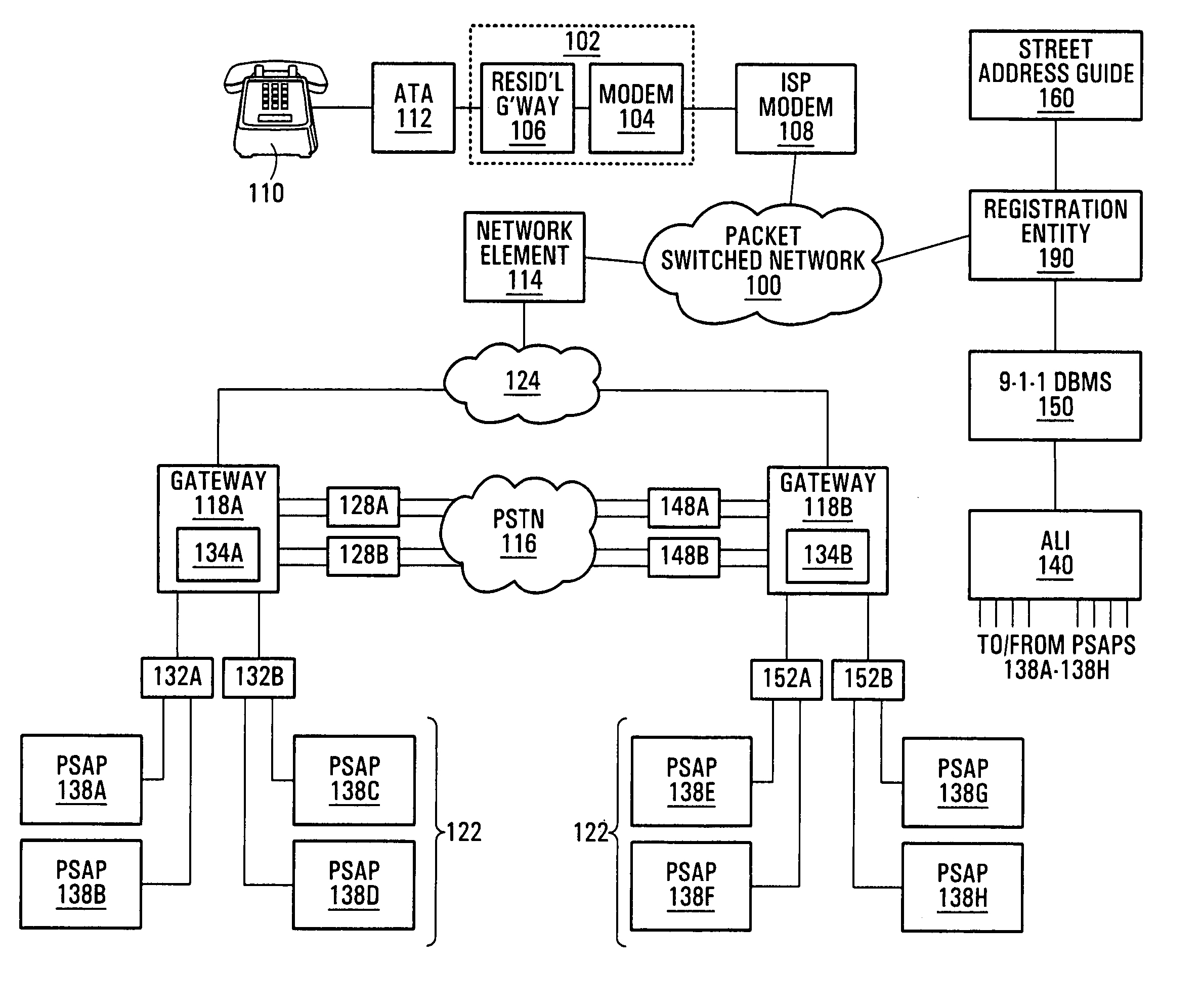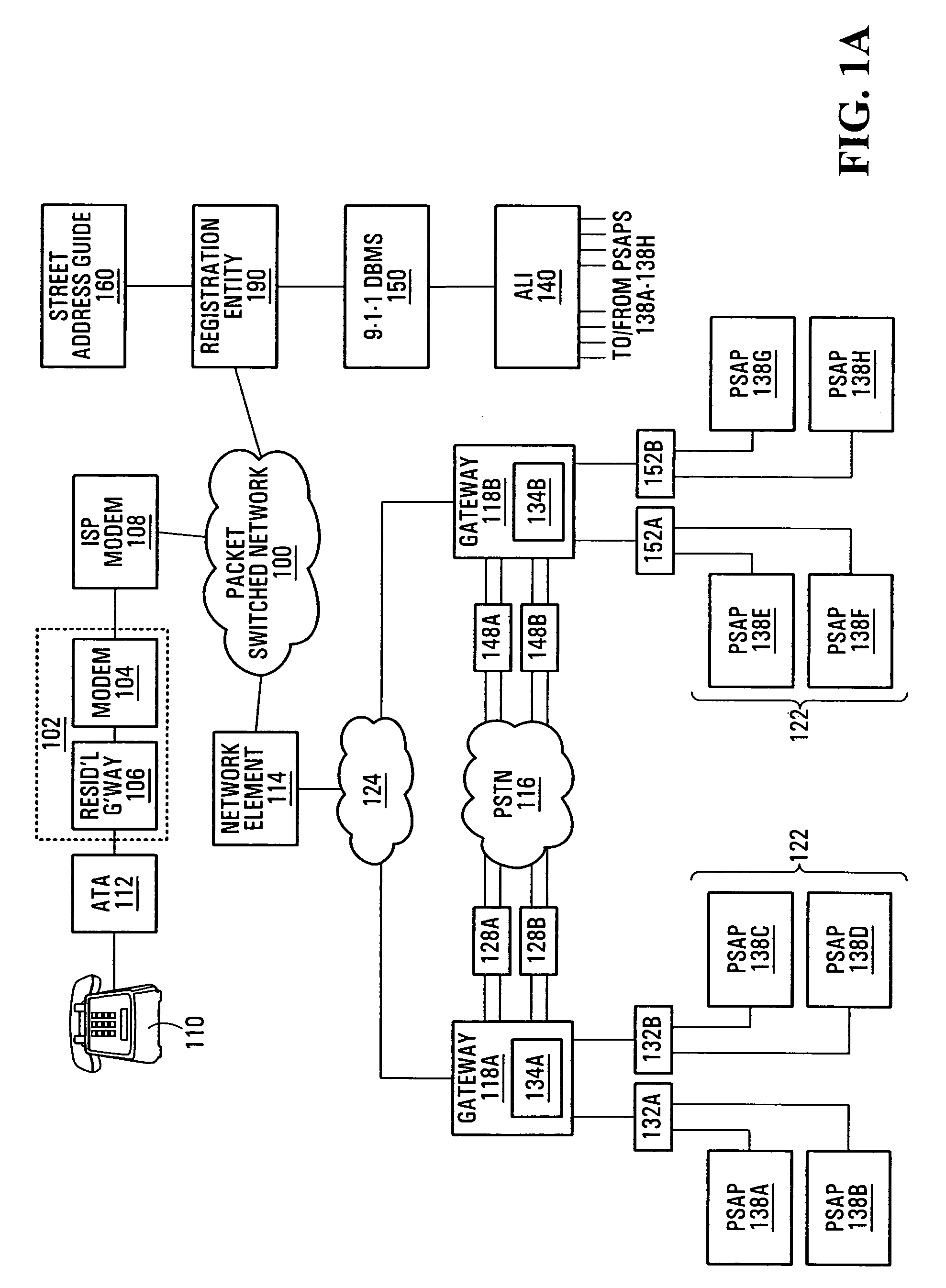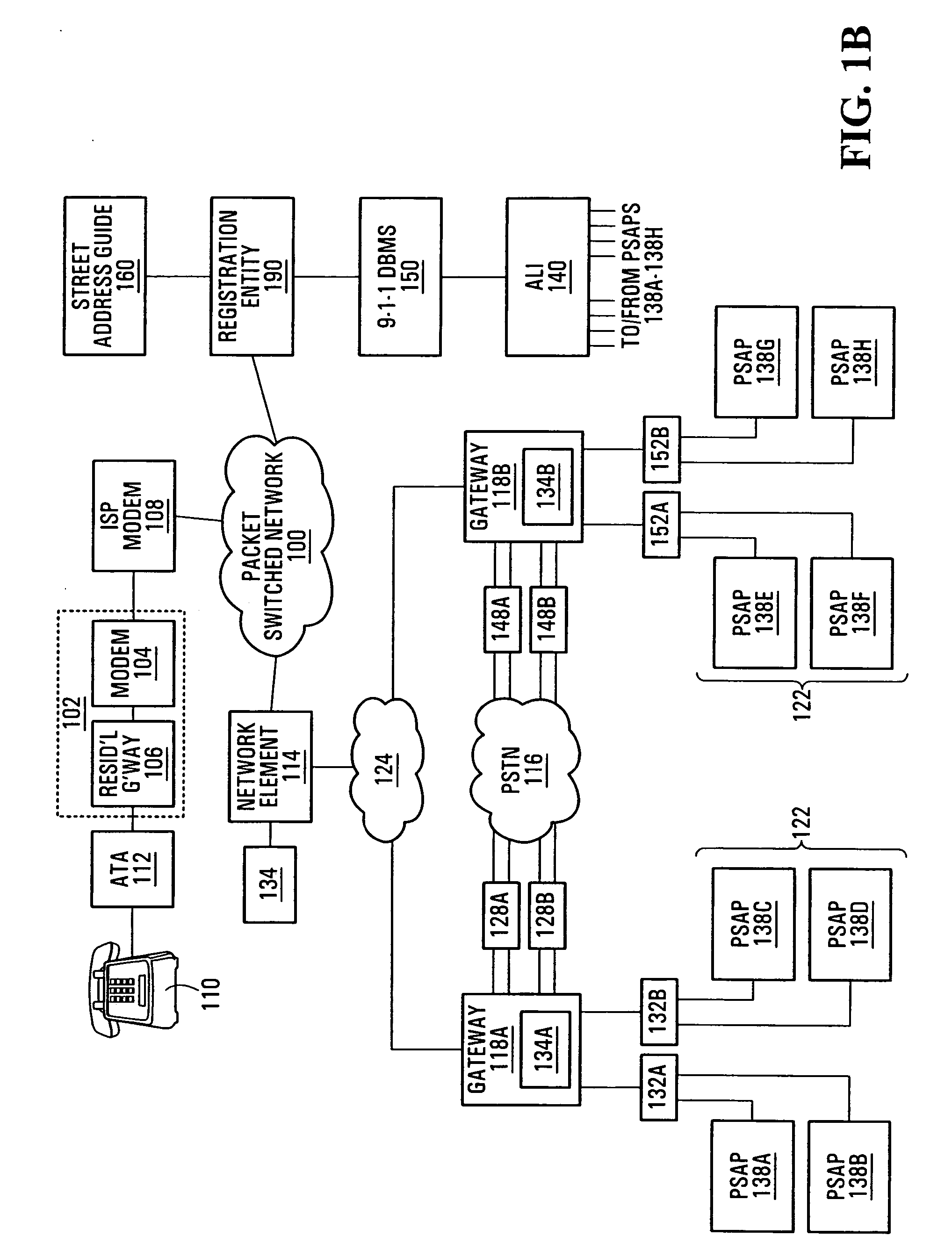Emergency call handling in a voice-over-packet environment
a voice-over-packet and emergency call technology, applied in the field of emergency services, can solve the problems of fundamental differences in technology, reducing the value of emergency services being provided, and dialing 9-1-1 during a voip connection does not work in the same way as a basic pstn connection
- Summary
- Abstract
- Description
- Claims
- Application Information
AI Technical Summary
Benefits of technology
Problems solved by technology
Method used
Image
Examples
Embodiment Construction
[0020]With reference to FIG. 1A, there is shown a network element architecture suitable for the delivery of emergency services in accordance with an embodiment of the present invention. A packet-switched network 100, which may or may not be the public Internet, comprises a backbone to which users have access via customer premises equipment 102 such as a modem 104 in combination with a residential gateway 106. In some embodiments, the modem 104 and the residential gateway 106 may be combined into a single unit at the customer premises.
[0021]A VoIP customer desirous of obtaining telephony services via the packet-switched network 100 may be provided with a special-purpose VoIP telephone or device that connects directly to the residential gateway 106. In another embodiment, and as illustrated in FIG. 1A, the VoIP customer utilizes a conventional analog telephone 110 which connects to the residential gateway 106 using an analog terminal adapter (ATA) 112. The ATA 112 permits the VoIP cus...
PUM
 Login to View More
Login to View More Abstract
Description
Claims
Application Information
 Login to View More
Login to View More - R&D
- Intellectual Property
- Life Sciences
- Materials
- Tech Scout
- Unparalleled Data Quality
- Higher Quality Content
- 60% Fewer Hallucinations
Browse by: Latest US Patents, China's latest patents, Technical Efficacy Thesaurus, Application Domain, Technology Topic, Popular Technical Reports.
© 2025 PatSnap. All rights reserved.Legal|Privacy policy|Modern Slavery Act Transparency Statement|Sitemap|About US| Contact US: help@patsnap.com



